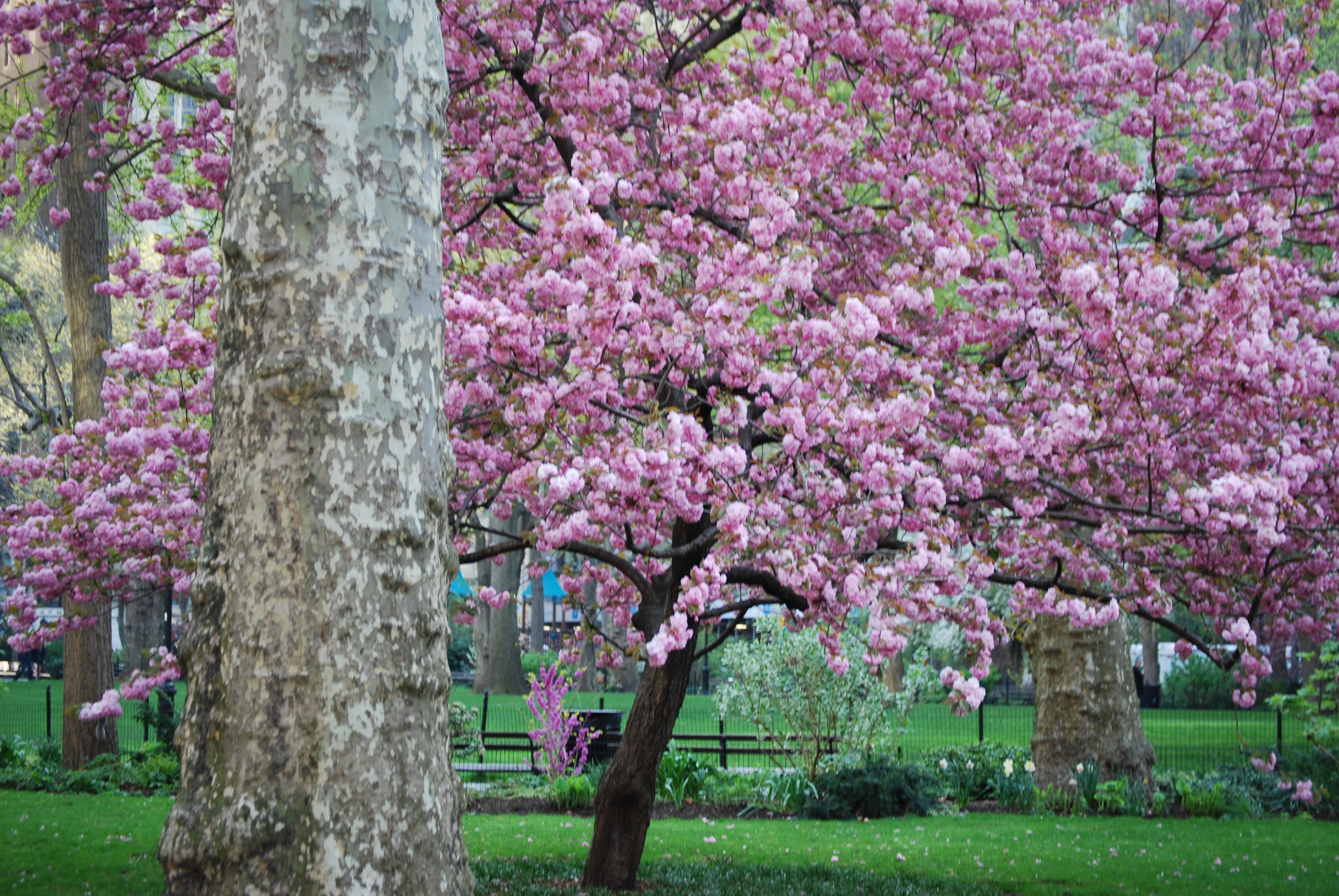This site uses cookies – Learn more.
Spring Blossoms
Spring Blossoms

Our ornamental cherry and apple trees are presently in peak bloom, here at Madison Square Park. Flowers usually only last a week so you better catch them before they’re gone.
For thirteen hundred years Japan has celebrated the beautiful spring blossoms of the Sakura trees, commonly known as flowering cherry. The term Hanami was used in Japan to refer to the custom of picnicking under the cherry blossoms. Hanami was originally limited to the elite of the Imperial Court, but the tradition soon spread to the samurai society and then to the common people. This yearly tradition has become engrained in Japanese culture with festivals and parties highlighting the flower’s annual blooms. Much like we track fall color status here in the north east, the Japanese Meteorological Agency tracks the sakura zensen (cherry blossom front) providing updates so flower viewing parties can be held at shrines, and temples. In Japan, cherry blossoms are a symbol of mortality because of their immense beauty and quick death and this symbolism often appears in popular Japanese culture.
Many in Washington DC celebrated the 100th anniversary of the Cherry Blossom Festival this year with 3,800 trees displayed composed of over 12 varieties. This festival honors the friendship between the United States and Japan and displays the gift of 3,000 cherry trees donated by Tokyo Mayor Yukio Ozaki in 1912. The Cherry Blossom Festival is dominated by two varieties of Sakura, the Kwanzan Cherry (Prunus serrulata Kwanzan’) and the Yoshino Cherry (Prunus x yedoensis). The Kwanzan Cherry is the dominate variety we have planted in Madison Square Park, but we do boast one Yoshino Cherry along 5th Avenue.
Kwanzan Cherries form a small tree with pink, double flowers usually blooming in early May. These trees are often fruitless and are clones, propagated vegetatively. Their lack of genetic diversity makes these trees more sensitive to pests and diseases. Their sensitivity to pollution also limits their average 60 year lifespan to 15-20 years here in the city. Most of the original Washington DC planting has been replaced by new trees over the years, but the original two trees planted can still be seen today. The national parks service and Japanese horticulturalists have produced many clones from these two trees to keep the line alive in the United States and Japan. The Yoshino Cherry produces white flowers and is the most popular flowering cherry tree worldwide. Yoshinos make beautiful trees resembling white fluffy clouds when in full bloom.
You might have also noticed the white flowering trees and darker pink flowering trees around the park. Both of these are varieties of crab apple. Crab apples and eating apples are only differentiated by their fruit size. Crab apples produce fruit less than 2 inches in diameter and the fruit is usually sour. Some produce small apples that can easily be made into tasty cider, wine, or jelly. Crab apples have great bark texture and an interesting gnarled form. There are hundreds of different varieties of crab apples with flowers ranging from single to double and in white to dark pink while leaves range from green to reddish purple depending on the cultivar. Apple trees are also prone to disease and insect damage so be sure to do your research before planting.
Here in the park, you might have noticed bands of evenly spaced holes in the bark of most of our crab apples. This is damage made by sap suckers, a close relative to woodpeckers. These birds feed on sugars in the sap and the occasional wood boring insect. They normally do not do enough damage to hurt the trees but they certainly make apples trees more distinct in the park. If you are having difficulty distinguishing apple trees from cherry trees, just look at the bark. Cherry trees have glossier bark with horizontal bands while apples have more textured vertical ridging.
Cherry and apple blossoms are undoubtedly one of the biggest spring shows of the plant world. Come experience 1300 years of the Hanami tradition by grabbing lunch in the park.



